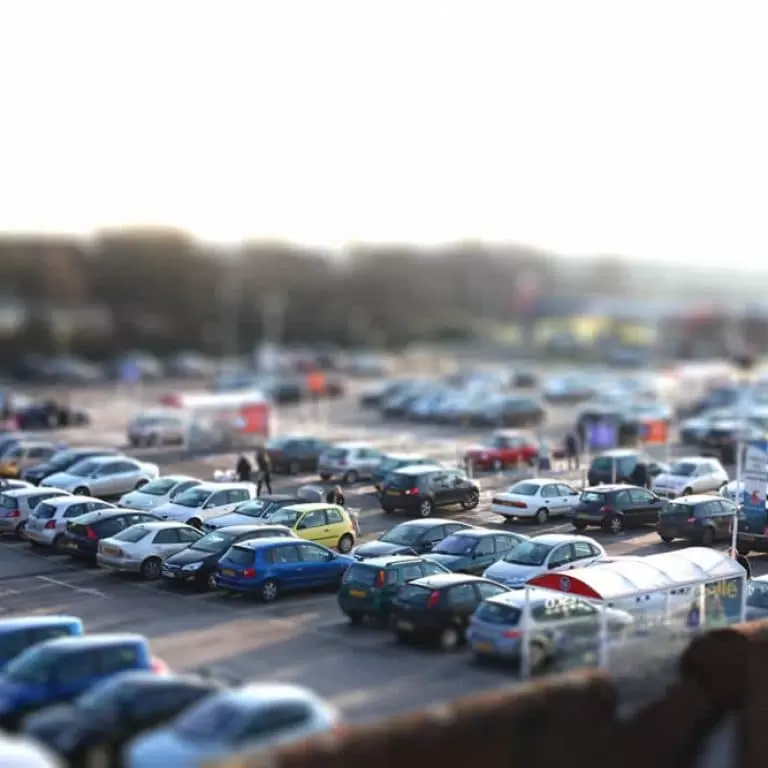
News Turning the very large into the very small with “miniature faking”
We touched on this technique in one of our previous blog posts, but there’s so much to explore with tilt-shift photography that it deserves another visit.
The effect of the tilt-shift, which requires both a rotation and movement of the lens to the image plane, makes even the grandest of subjects appear as if they are tiny. This process can also be replicated through a process known as “miniature faking.” This technique creates a shallow depth of field through digital post-processing of the image so as to simulate the look of a miniature scene.
Typically associated with close-up images, when tilt-shift is applied to longer shots that focus on a particularly large area, the perspective of the scene appears skewed giving the illusion of reduced scale, particularly effective when used on images of urbanised landscapes.
The distortion of the individual image that tilt-shift creates, when used in conjunction with time-lapse video, brings a scene to life in such a way that harkens to the effects of stop motion animation. This animation technique involves the manipulation of objects moved in small increments and photographed individually, that when played in a continuous sequence appear to create the illusion of movement.
Typically featuring dolls or clay figures, stop motion animation gives figures a very distinctive texture and movements appear lively and energetic. When tilt-shift is applied to time-lapse video, similar textures and movements can be identified, particularly on moving objects like vehicles and people.
Interestingly, the two techniques are often confused as they both incorporate still photographs of a live scene. The difference, however, comes from how the frames are captured. The subject matter of time-lapse photography tends to be real life, therefore giving the illusion of time moving faster, or “lapsing” when played at normal speed. On the contrary, stop motion requires models to be manipulated between each shot – a long process that does not occur naturally.
As with some of the time-lapse videos we have covered in past blog posts there is plenty of room to be creative in terms of the different visual narratives that can be produced, especially when both time-lapse and tilt-shift techniques are utilised for the same project.
Using these techniques together can transform the visual narratives told by a particular scene, giving a different perspective to the reality of even the world’s most iconic locations.
Martijn Doorlaard uses post-processing tilt-shift software in order to make the lively landscapes of Iceland and Norway resemble insects moving up and down an anthill. ‘The Little Nordics’ gives a quintessential, rather romantic view of Nordic life, with the shallow depth of the image conveys the impression of a little, almost self-contained world.
Tilt-shift photography is often most effective when the camera is positioned at a high angle looking down on the subject, so as to intensify this sense of a miniature world even further.
This video by Joerg Daiber showing heavily populated areas in Poland utilises high-angled shots really well so that the hustle and bustle of life really does appear pocket-sized. The clean and crisp quality of the image alongside some heavy blurring edits also make moving figures look like toys.
When other forms of post-processing are used alongside tilt-shift and time-lapse techniques, the results can be highly pleasing and create visually striking narratives.
Director Fernando Livschitz offers an incredibly luminous, even nostalgic view of one of America’s most iconic cities. The aerial views over heavily populated scenes such as Central Park and Grand Central Station really capture the vitality of life in New York City.
The combination of different camera movements and angles, sweeping under massive bridges and scaling towering buildings, as well as the animated pink, fluffy clouds, add a magical, almost fairytale quality to the narrative.
From these videos it is clear to see why tilt-shift is such a popular post-production technique. When added to time-lapse videos, where the pace of the action is increased so as to give the illusion of time passing quickly, tilt-shift adds a further fascinating perspective on moving imagery.